#french journalism
Text

“Yellow card for Ronald Araujo because of a foul by the Madrilène on Ronald Araujo.”
Are you drunk L’Équipe?!!
2 notes
·
View notes
Text
The Spy Who Wrote the News: Philippe Grumbach's Double Life as a KGB Agent and French Media Icon
Philippe Grumbach, once a respected figure in French Journalism, hid a secret double life as a KGB agent. His espionage activities, spanning 35 years, from 1946 to 1981, have cast a shadow over his career and the annals of journalistic history.
— By Mahnoor Jahangir | February 15, 2024
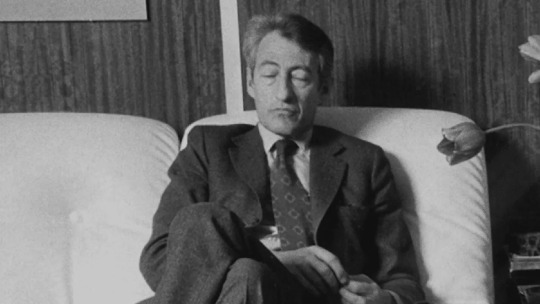
The Spy Who Wrote the News: Philippe Grumbach's Double Life as a KGB Agent and French Media Icon
In an era where transparency and integrity are heralded as pillars of journalism, the revelation that Philippe Grumbach, a luminary in French media, moonlighted as a KGB agent for 35 years, casts a long shadow over the annals of journalistic history. Grumbach, once the director of the esteemed L'Express Magazine and a figure interwoven with the fabric of French political and media landscapes, was exposed by the very publication he led. Operating under the codename 'Brok', he engaged in espionage from 1946 to 1981, funneling sensitive information about prominent political figures like François Mitterrand and Jacques Chirac to the Soviet Union. Despite the magnitude of his duplicity being unveiled in 1995, Grumbach faced no legal repercussions, taking his clandestine past to the grave in 2003.
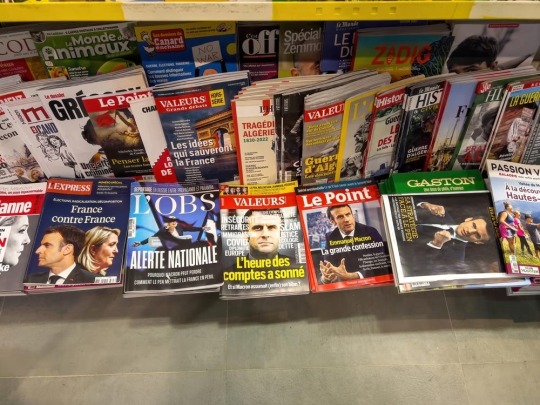
L’Express is one of France’s leading political news magazines Photograph: Hadrian/Shutterstock
The Spy Who Wrote the News
Grumbach's career in journalism and his clandestine operations ran parallel, intertwining his public persona with a covert identity known only to his handlers in Moscow. Beginning his espionage activities at the tender age of 22, Grumbach was not just a passive informant but an active participant in intelligence missions aimed at political destabilization. His involvement in the staged assassination attempt on François Mitterrand in 1959 speaks volumes of the lengths to which he went to secure Soviet interests. As the editorial secretary of the French Press Agency before joining L'Express in 1954 and eventually becoming its director in 1974, Grumbach utilized his positions to influence public opinion and political narratives, all while being handsomely compensated by the KGB.

Philippe Grumbach (2nd right) depicted on a picture taken in the newsroom of l'Express in 1973, with Françoise Giroud, who co-founded the magazine and later became Minister of Culture, and journalists Hugues Néel, Marc Ullmann, Jean-Jacques Faust and Roger Thérond. © L'Express/J.R Roustang
Unraveling a Web of Deceit
The shocking revelations about Grumbach's double life came from an unlikely source - the very magazine he once helmed. L'Express, in a bold move, disclosed the espionage activities of its former director, unraveling a complex web of deceit that spanned over three decades. Documents from the KGB archives, brought to light by KGB Colonel Vasiliy Mitrokhin, exposed Grumbach as one of post-war France's most significant spies. These documents detailed the intricate operations Grumbach was involved in, including the dissemination of disinformation and the manipulation of political landscapes to favor Soviet interests. His espionage career was not merely a footnote in his life but a defining aspect of his legacy, challenging the perception of him as a dedicated journalist.

This undated file picture shows Soviet policemen standing guard in front of the KGB building in Moscow, with a portrait of Vladimir Lenin on it. © AFP
A Legacy Under Scrutiny
The revelation of Philippe Grumbach's espionage activities has cast a pall over his contributions to French journalism and media. Grumbach, who was also a film producer and held various influential positions in commissions responsible for the quality of radio and television programs, is now seen through the prism of his duplicity. The hundreds of thousands of euros he received from the KGB for his services underscore the magnitude of his betrayal, not just to his country but to the very ethos of journalism. Grumbach's story is a stark reminder of the vulnerabilities inherent in the media landscape, susceptible to manipulation by those with ulterior motives.

Philippe Grumbach as a Young Journalist
In the aftermath of Grumbach's unmasking, questions linger about the extent of his influence and the ramifications of his actions on French politics and media. While Grumbach may have taken his secrets to the grave, the legacy of his espionage activities continues to evoke intrigue and caution. The narrative of Philippe Grumbach, once celebrated for his contributions to French journalism, now serves as a cautionary tale about the fine line between influence and manipulation, reminding us of the need for vigilance in an ever-complex world.
#Politics#France 🇫🇷#BNN Breaking#French Media Icon#KGB Agent#Philippe Grumbach#French Journalism#Mahnoor Jahangir#L'Express Magazine#Soviet Union#President François Mitterrand | President Jacques Chirac#Moscow
0 notes
Text
Disclose.ngo - journalisme d’investigation
0 notes
Text
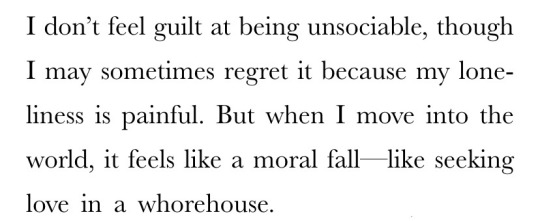
Susan Sontag, from As Consciousness is Harnessed to Flesh: Journals and Notebooks, 1964-1980; February 17th, 1970
Text ID: I don't feel guilt at being unsociable, though I may sometimes regret it because my loneliness is painful. But when I move into the world, it feels like a moral fall—like seeking love in a whorehouse.
#susan sontag#as consciousness is harnessed to flesh: journals and notebooks 1964-1980#as consciousness is harnessed to flesh#quote#journal#diary#french literature#lit#miscellanea#yeah.
16K notes
·
View notes
Text

post-therapy rest + recoup || 11/14/23
#mine#light academia#green academia#academia#cottage academia#cottagecore#dark academia#books#journaling#french academia#autumn academia#dark academic aesthetic#classic academia#academiacore#chaotic academia#chaotic academic aesthetic#academia outfit#light acadamia aesthetic#fall academia#light academia aesthetic#books and coffee#bookstagram#bookblr#books and libraries#books and reading#bookish#bookworm
379 notes
·
View notes
Text


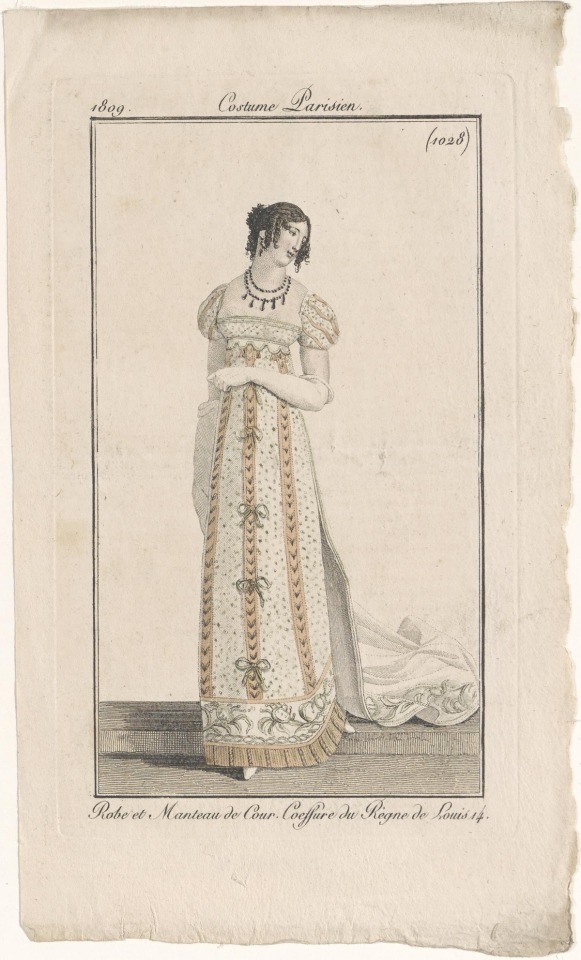


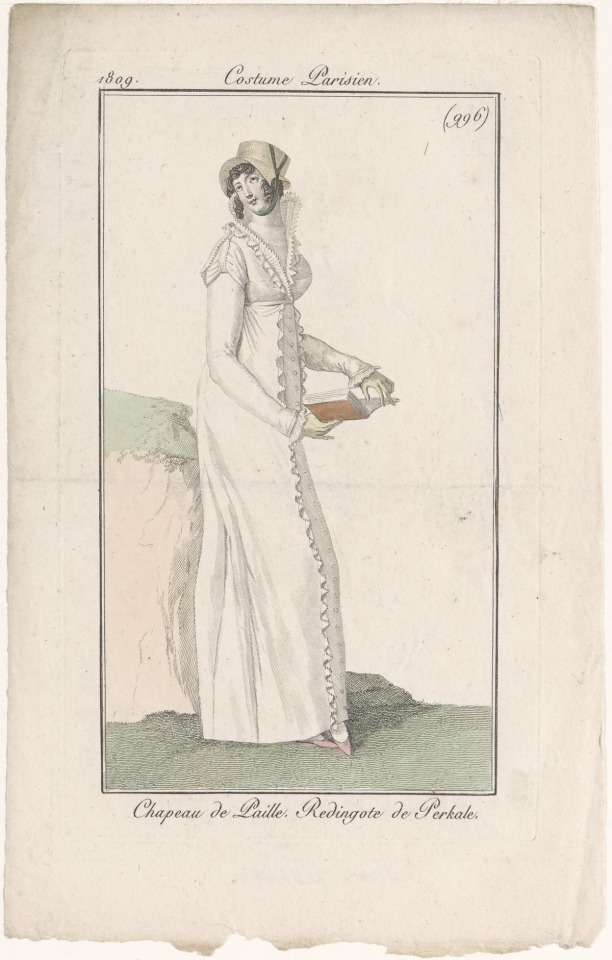
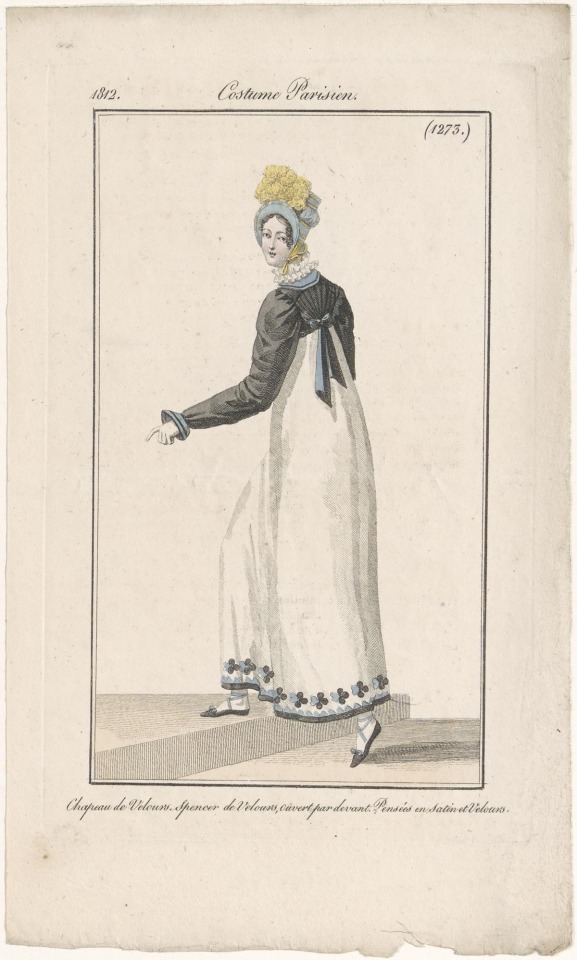

Fashion prints from Journal des Dames et des Modes
1808-1814, Napoleonic era
CMU
#fashion plates#fashion prints#prints#fashion#Journal des Dames et des Modes#Napoleonic era#napoleonic#napoleon#first french empire#napoleon bonaparte#1800s#1800s fashion#19th century fashion#historical fashion#history of fashion#art#centraal museum#Netherlands#french empire#mode#regency#regency era#regency fashion#Jane Austen#print#pretty#France#empire style#empire
260 notes
·
View notes
Text
#kaeya alberich#amethyst#jamie campbell bower#journal#eating diary#aron piper#eda clawthorne#ufo#taz#french bulldog#red velvet#Dwight Schrute#taylor momsen#pay me for my time
128 notes
·
View notes
Text
god help me i am about to enter live chat with new york public library to try and persuade them to scan an article for me from a journal published in 1997 because it's one of 4 back-issues not available online from the publisher and they are the only public library on the whole of planet earth with a physical copy
#i hate french journals#no ma'am i do not have a new york public library card i live on a different continent#you see why it may be a little tricky for me to pop in and read it on site#please madam librarian you're my only hope*#*actually there is a second hope which is bribing someone at university of liverpool to go into the swampy-ass basement#but succeeding at this would be funnier
1K notes
·
View notes
Text


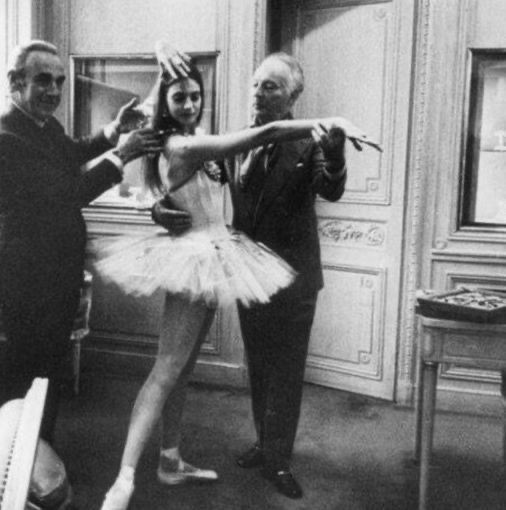
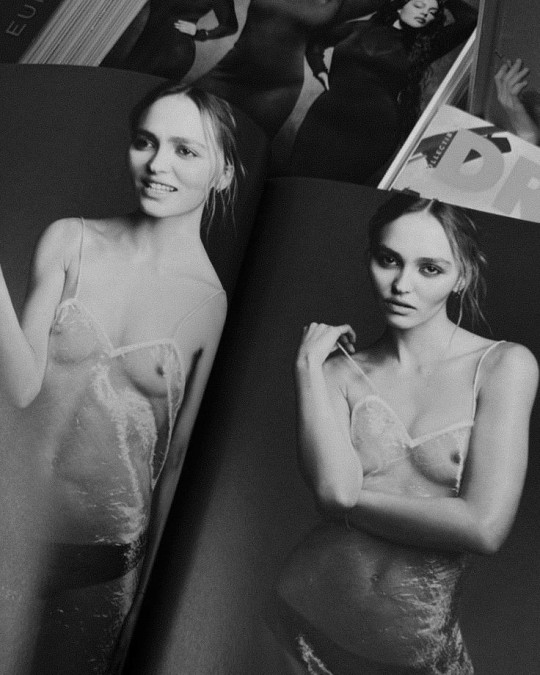

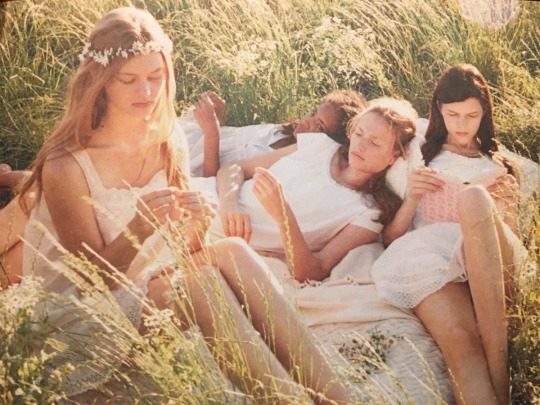

The summer's wild
And I've been waiting for you all this time
I adore you, can't you see, you're meant for me?
Summer's hot but I've been cold without you
I was so wrong not to tell, I'm in regine, tangerine dreams.
Salvatore- Lana del Rey
#girlblogging#coquette#it girl#snow angel#pinterest girl#pink pilates princess#girlhood#cottagecore#cottage aesthetic#lizzy grant#lana unreleased#lisbon sisters#salvatore#lily rose depp#marie antoinette#im just a girl#audrey hepburn#black swan#french girl#hell is a teenage girl#farmers daughter#journaling#moodboard#my year of rest and relaxation#oscar wilde#poetry#sylvia plath#the virgin suicides#angelcore
23 notes
·
View notes
Text

The French Dispatch directed by Wes Anderson
43 notes
·
View notes
Text

First red rose, watercolor sketch on antique music scores by Claudine Lecoustre ©️2024
Linktree
#watercolour#watercolor#red roses#rose sketch#french#france#french painter#antique music scores#aquarelle#croquis#outdoor sketching#artist on tumblr#artist on Instagram#garden sketching#garden journal
20 notes
·
View notes
Text
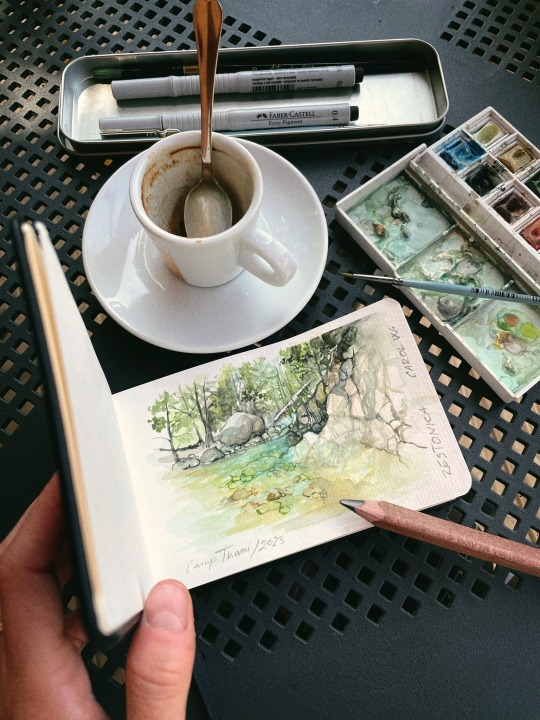
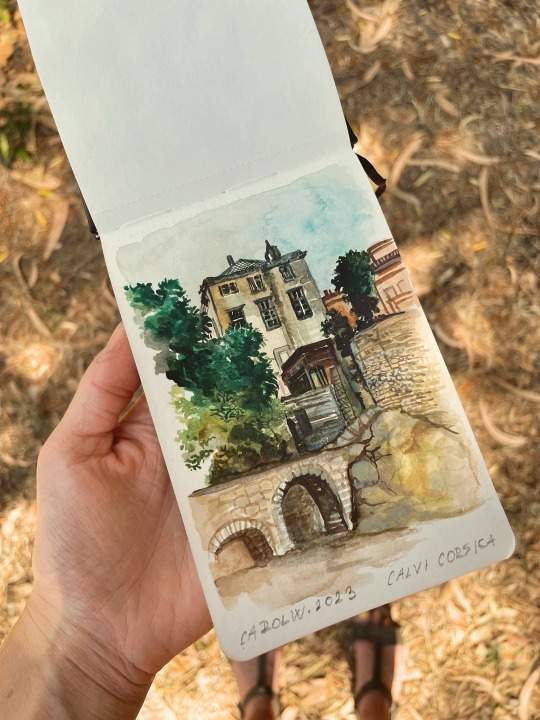
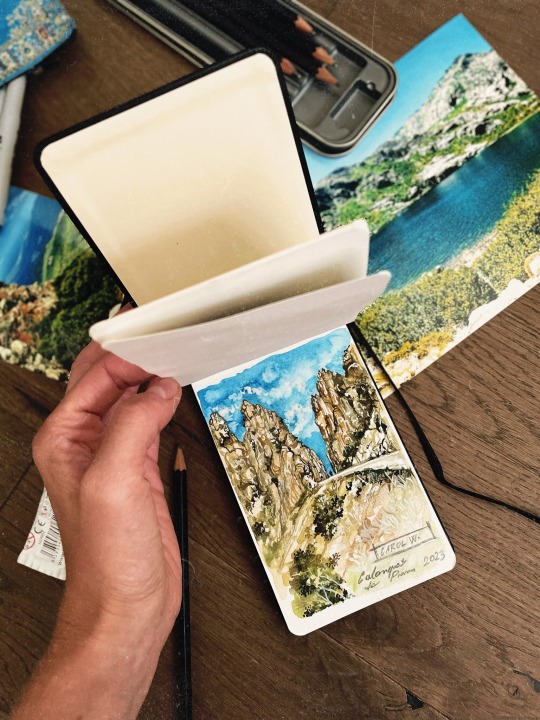
Restonica valley - Calvi - Calanques de Piana
-> last one from my Corsica notes/impressions, finished at home. I’ve never saw a place which strongly reminded me some artwork. Yes, we sometimes feeling deja vu, or we look at something and saying:”Oh, this reminds me this and that… “… but have you ever felt that you actually “see this thing” before? But somewhere else!
When I saw these jagged cliffs of Piana I told myself, that my favourite Max Ernst definitely get inspiration from it. Because one of his best pieces(for me), Europe after the rain, is one of the many views from Calanques de Piana.
#art#illustration#drawing#draw#arte#handmade#corsica#journal#journal ideas#france#journal inspiration#travel diary#watercolorpainting#watercolours#sketchbook#sketchart#french vibes#french village#landscapepainting
103 notes
·
View notes
Text
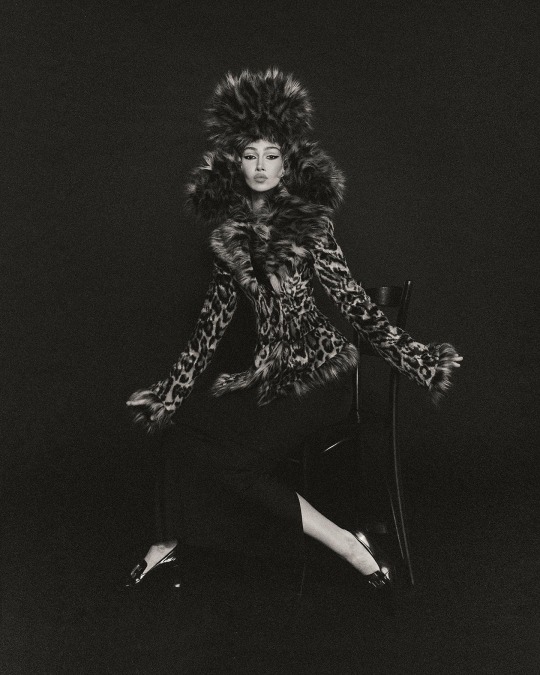


Nadia Lee Cohen x MARFA JOURNAL
24 notes
·
View notes
Text

Susan Sontag, from As Consciousness is Harnessed to Flesh: Journals and Notebooks, 1964-1980; February 17th, 1970
Text ID: I’m chasing myself (I have been for years).
#susan sontag#as consciousness is harnessed to flesh: journals and notebooks 1964-1980#as consciousness is harnessed to flesh#quote#journal#diary#french literature#lit#miscellanea#mhm.
5K notes
·
View notes
Text
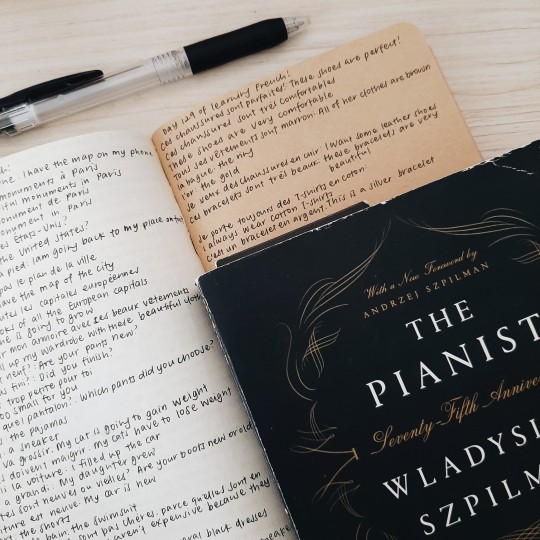
My studygram
Currently reading the pianist
#journal#notes#aesthetic#studyblr#motivation#studyspo#study#bookblr#light academia#light academia aesthetic#french#gloomstudy#heycoral#studyvan#myhoneststudyblr#heydilli#heyzainab#learnelle
700 notes
·
View notes
Text
Women artists in Napoleonic France

(Young women copying: ‘Love begging Venus to forgive Psyche’ which was displayed at the 1808 Salon. Sketch by Georges Rouget)
Quotes from an article about women’s participation in the art world during the Napoleonic era.
Article:
Heather Belnap Jensen, “The Journal des Dames et des Modes: Fashioning Women in the Arts, c. 1800-1815,” Nineteenth-Century Art Worldwide 5, no. 1 (Spring 2006) (source)
“More and more women artists began exhibiting their work in public venues and receiving recognition for their contributions at this time. While only three women artists had participated in the 1789 biennial Salon, fifty participated in the Salon of 1806–an increase in women’s participation of over 1600 percent in seventeen years.”
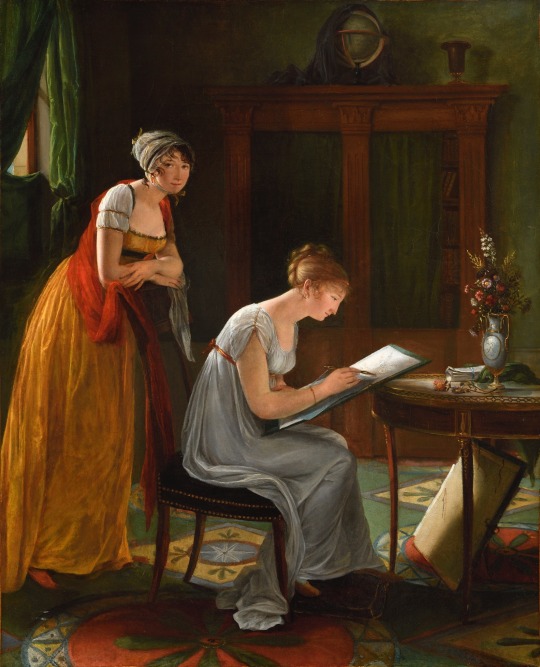
(Woman artist giving a drawing lesson — Self-portrait, 1810, by Louise-Adéone Drölling)
“We see a move away from the emphasis on the public sphere to the private space as motifs, intimating a valorization of a woman’s world. While history painting, which played such a crucial role in Revolutionary visual culture, remained the privileged genre at the turn of the century, the rise in portraiture, landscape, and genre painting in Napoleonic France indicates this shift in values.”
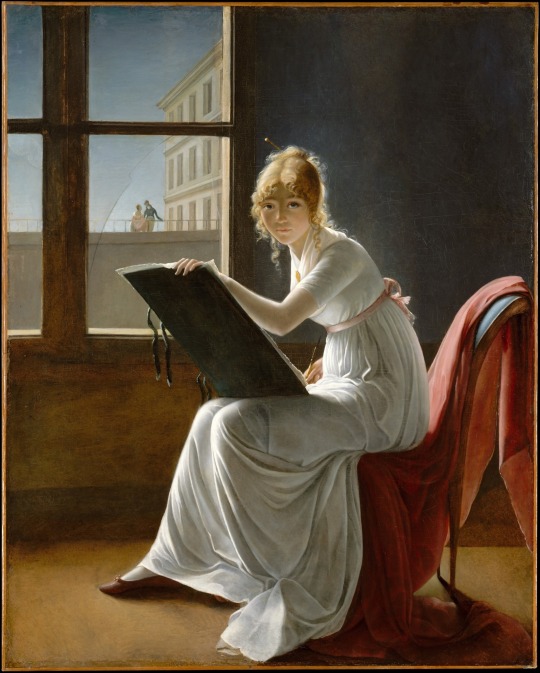
(Young Woman Drawing—Portrait of Charlotte du Val d'Ognes, 1801, by Marie-Denise Villers)
“Women’s journals, which often published art-related materials, have been largely overlooked in discussions of developments in late eighteenth-and early nineteenth-century French visual culture. This is surprising, given that bibliographies on art criticism of this period frequently cite items from these publications.”
One of the most influential women’s journal of the period was Journal des Dames et des Modes. It was created by Jean-Baptiste Sellèque and Pierre de La Mésangère in 1797 and continued until 1839.
“La Mésangère’s key collaborator during the Napoleonic period was a woman, Albertine Clément, née Hémery, a well-known figure in both journalistic and cultural circles in post-Revolutionary France, and that several women were regular contributors to this journal during this era.”
Annemarie Kleinert did a study on the journal:
“She determined that the journal targeted bourgeois women between the ages of 18 and 40 years old who could afford the annual subscription rate of 10 livres, and that the majority of subscribers during the period from 1800 to 1815 were from the provinces.”

(Portrait of a Young Woman Drawing Herself, early 1800s, by Louis-Léopold Boilly)
Interest from women in creating their own designs:
“Fashion plates that accompanied each issue of this journal gave visual testimony to this heightened interest in women’s artistic engagement. Indeed, women in fashion plates were sometimes presented in the act of sketching and drawing, as shown in a plate that appeared as an insert in an 1802 issue of the Journal des Dames et des Modes.”
The act of women creating art was compared to motherhood. In that way, women were encouraged to make art, but in terms which enforced traditional and patriarchal ideas:
“Furthermore, the vocabulary used by the author stresses the ways in which artistic creativity mirrors childbirth and elicits feelings of exaltation over one’s art that are similar to those evoked by motherhood when he writes that ‘she smiles at the objects which are born of her colors’ and calls the site of her production a ‘creative space.’”
There were opportunities for women to paint nude subjects for classical style art:
“Recent scholarship suggests that there were opportunities for such study in the Napoleonic era. By 1800, female students could attend anatomy classes given by the surgeon Sue and also by the École du Modèle Vivant at Versailles, and artist Adele Romilly reported that David, Régnault, and Guérin all provided mixed studios that offered courses on life drawing from the nude.”
One of the claims made against the women’s journals is that they were sexist. The author points out that it’s more complicated and not entirely true. The journals included laudatory reviews of paintings by female artists at the salons, biographies of women artists, such as Angelica Kauffmann, and published excerpts of pamphlets written by women, such as Angélique Mongez.
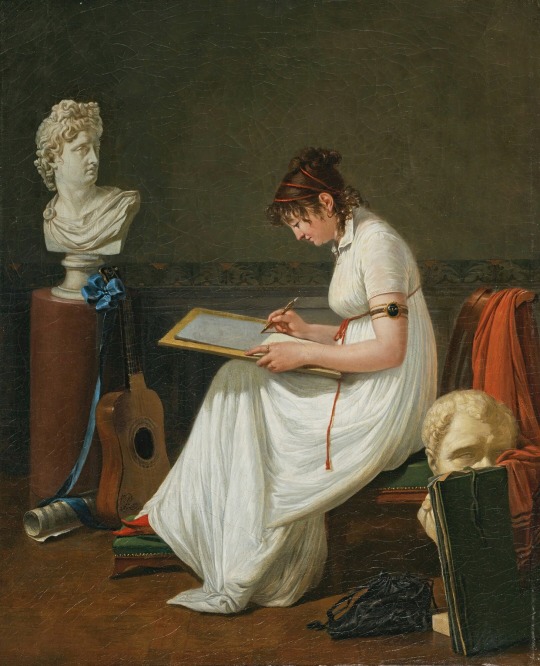
(Portrait of an Artist Drawing after the Antique, c. 1800s, Jean François Sablet)
However, the author also says there was a lot of anxiety about the increase in female participation in the art world, both as creators and as spectators. There were articles describing women at museums in derogatory terms. One in particular described a young girl being overcome by emotion at the sight of the statue of Apollo Belvedere and creating such a large scene that she had to be dragged away in tears.
These articles imply that women spectators had become dominant enough that it could inspire critics.
Women had become so important in the art world that a really unique phenomenon happened:
“Roger Bellet has demonstrated that there are known instances in late eighteenth-and early nineteenth-century France when men published under a female pseudonym.”
Many of the top artists who were admired in the era were women such as Élisabeth Louise Vigée-Lebrun, Marguerite Gérard, Constance Mayer, Adèle Romany, Adélaïde Labille-Guiard, Pauline Auzou, Jeanne-Elisabeth Chaudet, Marie-Guillemine Benoist, Constance Marie Charpentier and many others.
#art#women’s art#women artists#napoleonic era#napoleonic#mine#fashion#writing#first french empire#napoleon bonaparte#quotes#ref#reference#Journal des Dames et des Modes#19th century#1800s#fashion history#historical fashion#history of fashion#french empire#france#history#french revolution#frev#women’s history#womens art#women in art#women painters#fashion plates
61 notes
·
View notes